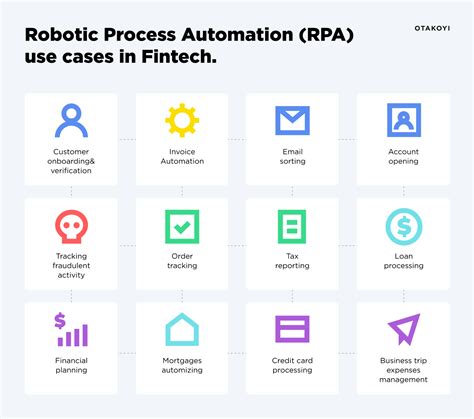Berikut adalah posting blog tentang RPA untuk keuangan:
RPA for Finance: A Complete Recipe for Automation
Robotic Process Automation (RPA) is rapidly transforming the finance industry. Repetitive, rule-based tasks that once consumed hours of human effort can now be automated, freeing up valuable time and resources for more strategic initiatives. This post provides a complete recipe for implementing RPA in your finance department, covering everything from planning and implementation to ongoing maintenance and optimization.
Understanding the Ingredients: Key RPA Capabilities for Finance
Before diving into the recipe, let's understand the key ingredients – the capabilities of RPA that are particularly relevant to finance:
- Data Extraction and Input: RPA can automatically extract data from various sources, such as invoices, bank statements, and spreadsheets, and accurately input it into financial systems. This eliminates manual data entry, a notorious source of errors.
- Reconciliation: Automating reconciliation processes, like bank reconciliations and account receivables/payables matching, significantly reduces processing time and improves accuracy.
- Report Generation: RPA can automate the generation of financial reports, making them available faster and with greater consistency.
- Transaction Processing: Processes like invoice processing, payment processing, and expense reporting can all be significantly streamlined with RPA.
- Compliance and Auditing: RPA can help maintain regulatory compliance by consistently applying rules and generating auditable trails.
The Recipe: A Step-by-Step Guide to Implementing RPA in Finance
Implementing RPA is a multi-stage process. Think of it as a carefully crafted recipe, each step crucial for a successful outcome.
1. Assessment and Planning: Identifying the Right Recipe
- Process Analysis: Begin by identifying the most repetitive, rule-based financial processes that are suitable for automation. Consider processes with high volume, low complexity, and significant manual effort.
- ROI Calculation: Carefully assess the potential return on investment (ROI) for each identified process. Consider the cost of implementing RPA against the savings from reduced labor costs and improved efficiency.
- Technology Selection: Choose the right RPA platform based on your specific needs and existing IT infrastructure. Consider factors such as scalability, integration capabilities, and vendor support.
2. Implementation and Development: Preparing the Ingredients
- Bot Development: Develop RPA bots to automate the chosen processes. This typically involves configuring the bot to interact with various applications and systems.
- Testing and Validation: Thoroughly test the bots to ensure accuracy and reliability before deploying them to a production environment. This includes testing with various data sets and scenarios.
- Integration: Integrate the RPA bots with your existing financial systems and applications. This ensures seamless data flow and minimal disruption.
3. Deployment and Monitoring: Baking the Cake
- Phased Rollout: Implement RPA in phases, starting with a pilot project to test and refine the process before scaling up.
- Monitoring and Optimization: Continuously monitor the performance of the RPA bots and make adjustments as needed to optimize efficiency and accuracy. Regular updates and maintenance are key.
- Training and Support: Provide adequate training to staff on how to use and interact with the RPA bots. Ensure adequate support is available to address any issues.
4. Scaling and Expansion: Serving and Enjoying the Cake
- Identify New Opportunities: After a successful initial implementation, identify additional processes that can be automated using RPA.
- Continuous Improvement: Continuously evaluate the performance of your RPA implementation and look for opportunities to further optimize and improve efficiency.
- Future-Proofing: Stay informed about the latest advancements in RPA technology to ensure your implementation remains cutting-edge and effective.
The Finishing Touch: Key Considerations for Success
- Data Security and Governance: Implement robust security measures to protect sensitive financial data.
- Change Management: Effectively manage the change process to ensure smooth adoption by staff.
- Vendor Selection: Choose a reputable RPA vendor with a proven track record and strong support capabilities.
By following this recipe, finance departments can leverage the power of RPA to achieve significant improvements in efficiency, accuracy, and compliance. Remember, a well-planned and executed RPA implementation is key to unlocking the true potential of automation in finance.
